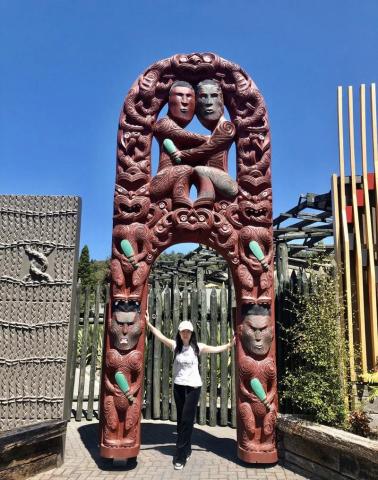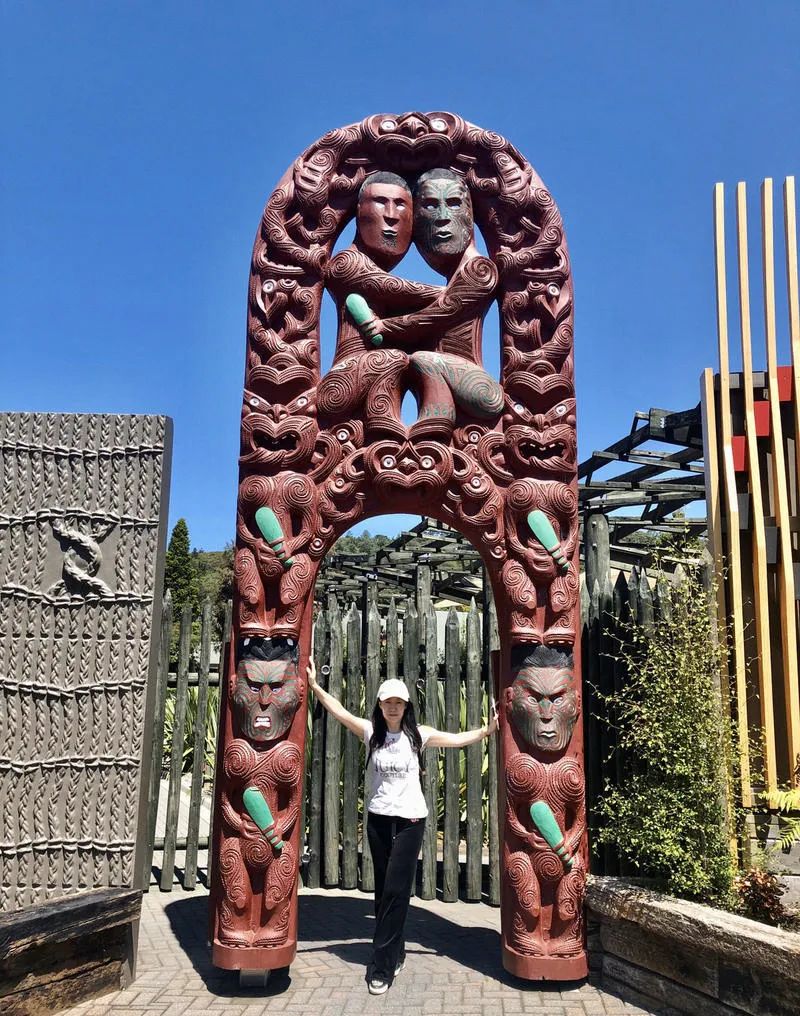

On the evening of January 11, we flew from Melbourne, Australia to Auckland, New Zealand. When we landed, it was already two o'clock in the evening local time. On the morning of the 12th, we took a minibus to Rotorua, a city in the northern part of New Zealand's North Island.

New Zealand has a land area of approximately 270,000 square kilometers and consists of the North Island, South Island, Stewart Island and some nearby small islands. The North Island has many volcanoes and hot springs, while the South Island has many glaciers and lakes. New Zealand’s forest coverage rate reaches 29%, and natural pastures and farms account for 50%. The total is 79%. It is truly a green kingdom!

We traveled north from Auckland for more than two hours, and all we could see were forests, grasslands and herds of cattle, sheep, and horses, with almost no people in sight. Such a good place, before 1642, was the territory of Maori people who drifted from the Cook Islands in canoes.

Of course, there is also a theory that the Maori are aboriginal people who drifted from Taiwan 4,000 years ago. When Maori people visited the ancestral temple of the Taiba Long tribe of the Ami people in Taiwan, they found that the location of doors and windows, building beams and columns and other structures were the same as those of Maori gathering places.

In 1642, the Dutch navigator Tasman discovered the west coast of New Zealand during his ocean adventure. When he landed, he had a head-on confrontation with the Maori, but was beaten by the brave Maori and fled. The Maori are world-famous cannibals, and they still ate them more than 200 years ago!

The British Captain Cook did it differently. When he and his men landed in New Zealand in 1769, they gave the Maori delicious food and exquisite items brought from Europe. The Maori were very happy, and they gradually voluntarily surrendered to the British Empire. It can be seen that it is much smarter to overcome hardness with softness than to confront hardness with head-on.

On February 6, 1840, Maori and the British Crown signed the Treaty of Waitangi in the town of Waitangi in the Bay of Islands. The treaty made New Zealand finally a colony under the British Crown. This treaty was considered New Zealand's Founding document. In 1856, New Zealand became an autonomous British colony, an autonomous region in 1907, and by 1947, New Zealand was fully independent.

As soon as the gossip was finished, the car had arrived in Rotorua. This is a small city with less than 100,000 people, including 20,000 Maori. After lunch, we went straight to the Maori Cultural Village and paid our own money to watch a Maori song and dance performance.

The Maori people welcomed us with a "challenging" welcome ceremony. They were all dressed in ethnic costumes. The leader was shirtless and barefoot, wearing a grass skirt and facial makeup on his face. But I saw him holding a spear, shouting, waving it towards the guests, and sticking out his tongue from time to time. As he approached his guests, he dropped a green leafy branch on the ground. At this time, the leading guest picked it up and held it respectfully. When the other party finished dancing, he returned it with both hands.


At this time, the welcome ceremony came to an end, and a large number of guests filed into the theater and enjoyed the wonderful and unique Maori song and dance performances for nearly an hour. Maori are born artists. They skillfully used the melodies and harmonies of hymns they learned from missionaries to form bright and pleasant Maori music. Let me end this urgent travelogue with a Maori song full of people-centered philosophical concepts:

When you take the heart out of the bush
When you combine language and culture
detach from people
birds will sing there
How do people continue to exist
you ask me
what is the world
the most important thing
My answer must be
That's people
That's people
That's people

(To be continued)
